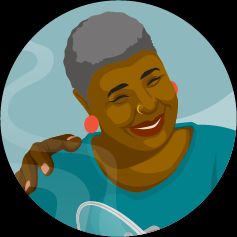Hypoglycemia happens when your blood sugar drops below a normal level. In mild cases, it often causes symptoms such as shakiness, confusion, and lightheadedness.
Anybody can experience hypoglycemia, but it’s particularly common among people with diabetes who take insulin.
Medical professionals often recommend treating mild low blood sugar by following the rule of 15, also known as the 15-15 rule.
This rule states that you should consume 15 grams (g) of carbohydrates when your blood sugar drops under 70 mg/dL, and to check your blood sugar again after 15 minutes. If your blood sugar is still low, you repeat the process.
In this article, we’ll take a closer look at how you can use the 15-15 rule to manage your low blood sugar.
After eating carbohydrates, your digestive system breaks these carbohydrates down into a type of sugar called glucose. Glucose travels from your digestive system to your bloodstream so that it can circulate around your body and provide your tissues and organs with energy.
Hypoglycemia is when your blood glucose level drops below normal. A reading of
Your brain depends mostly on glucose for energy. When your blood sugar drops, it’s common to experience cognitive symptoms such as impaired judgment and difficulty concentrating. If left untreated, your blood sugar can drop to a dangerously low level that can lead to coma or death.
About
Many medical professionals recommend following the 15-15 rule when your blood sugar is between 55 to 69 mg/dL.
Here’s how you can follow the rule:
The rule of 15
- Consume 15 g of simple carbohydrates, such as glucose tablets or orange juice.
- Wait 15 minutes and measure your blood sugar levels again.
- If your blood sugar is still between 55 to 69 mg/dL, consume another 15 g of carbohydrates.
- Keep repeating until your blood sugar is above 70 mg/dL.
It’s recommended to wait 15 minutes before remeasuring your blood sugar because 15 minutes is about the amount of time it takes for the sugar to reach your bloodstream.
Young children often don’t need 15 g of carbohydrates. According to the American Diabetes Association:
- infants may only need 6 g
- toddlers may only need 8 g
- small children may only need 10 g
Your child’s diabetes team can help you develop an optimal plan for your child.
The rule of 15 shouldn’t be followed when your blood sugar is below 55 mg/dL.
Best types of carbohydrates to raise your blood sugar
When you’re trying to raise your blood sugar quickly, it’s best to stick to foods that are made up of mostly simple sugars. Foods with a lot of fiber, protein, or fat take longer to break down.
Here are some examples of simple carbohydrates you can use to raise your blood sugar, with approximate portion sizes to get 15 g of sugar:
- 4 glucose tablets
- 1/2 can of regular soda
- 3 pieces of hard candy
- 1/2 cup of fruit juice
- 1 tablespoon of sugar, syrup, or honey
- 1 dose of glucose tablets
Severe hypoglycemia below 54 mg/dL is too low to treat with the rule of 15. Depending on your symptoms, you may not be able to treat yourself or measure your own blood sugar levels.
According to the
Glucagon kits are available by prescription. You can speak with your doctor about whether you need a kit.
It’s important to treat low blood sugar as soon as you notice symptoms. This can help prevent your blood sugar from dropping to a severely low level.
Symptoms of mild low blood sugar include:
- shakiness or jitteriness
- fatigue
- dizziness
- confusion
- lightheadedness
- hunger
- irritability
- fast heart rate
- trouble speaking clearly
If your blood sugar drops while you’re
- crying out or having nightmares
- feeling tired, confused, or irritable after waking
- sweating through your pajamas or into your sheets
Severe low blood sugar can cause:
People who take insulin to treat diabetes are prone to developing low blood sugar. Many factors can contribute to the development of low blood sugar including:
- going too long without consuming carbohydrates
- not eating for an extended period of time
- taking too much insulin
- not eating enough carbohydrates to balance your insulin
- taking your insulin at the wrong time
- consuming too much alcohol
- increased physical activity and exercise
- high altitudes
- hot or humid weather
- some medications such as hepatitis C medications
You can minimize your chances of developing low blood sugar by:
- tracking your blood sugar levels regularly
- always keeping a sugary snack on hand, such as glucose tablets or a juice box
- not skipping meals
- eating a snack before you exercise
- asking your doctor if you should take less insulin before intense exercise
- not consuming large amounts of alcohol
- checking your blood sugar levels more often, especially in conditions that caused low blood sugar in the past
Many medical professionals recommend following the rule of 15, also known as the 15-15 rule, when you have low blood sugar.
To follow this rule, you consume 15 g of simple carbohydrates and wait 15 minutes before measuring your blood sugar levels again. If your blood sugar is still low, you can repeat the process.
The 15-15 rule shouldn’t be used to treat severe low blood sugar. If your blood sugar is severely low, you may need a glucagon injection. Talk with your doctor about whether you should have a prescription glucagon kit.

